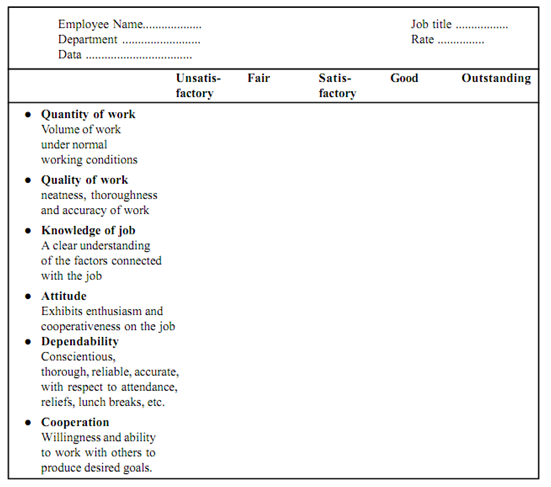Graphic rating scale
Under this method, a printed form, as indicated below, is utilized to evaluate the performance of worker. A variety of traits can be used in these kinds of rating devices, the most common being the quality and quantity of work. The rating scales may also be adapted including traits that the company considers significant for effectiveness on the job. A model of a graphic rating scale is shown below.
Box 1: Typical Graphic Rating Scale

From the graphic rating scales, excerpts may be obtained regarding the performance standards of employees. For example, if the worker has serious gaps in technical- professional knowledge (knows just rudimentary phases of job); lacks the knowledge to bring about an enhancement in productivity; it is reluctant to take decisions on his own (on even while he take decisions they are unreliable & substandard);; fails to plan ahead effectively; declines to accept responsibility; misuses and wastes resources; etc., then it can securely be inferred that the standards of performance of the worker are disappointing and dismal.
The rating scale is the most general method of evaluation of an employee's performance currently. In favour of the rating scale one positive point is that it is easy to understand, simple to utilize and permits a statistical tabulation of scores of worker. When ratings are objective in nature, they may be effectively utilized as evaluators. However, the graphic rating scale may suffer from a long standing disadvantage for example it may be arbitrary and the rating can be subjective. Another pitfall is that each of the characteristic is equally vital in evaluation of the worker's performance and so on.